Femininity and Power in Jazz: Breaking Historical Moulds
When we think of a jazz band, and particularly the saxophonist, the image that often comes to mind is that of a man with a classic, elegant, and sophisticated style. This vision, deeply ingrained in our cultural perception, reflects not only an aesthetic but also a historical narrative in which masculinity has predominated in certain roles within this musical genre.
Since childhood, I have been fascinated by jazz and the world it encapsulates. I was always captivated by its atmosphere of elegance and refinement: the carefully chosen attire, the almost magical ambience surrounding the musicians, and that classic, intellectual energy they managed to convey with every note. Inspired by artists such as Louis Armstrong, B.B. King, and Miles Davis, I arrived at a conclusion that has always intrigued me: why has a woman never been granted a prominent role as a saxophonist, a position so central and brilliant within a band?
It is true that some women have gained recognition in the realms of jazz and blues, but predominantly as singers or composers. Among them, we can name iconic figures such as Billie Holiday, Ella Fitzgerald, Sarah Vaughan and Nina Simone. However, when it comes to female instrumentalists, especially saxophonists, the landscape is different. In the history of jazz, the only womans to achieve global recognition as a saxophonist were:
Peggy Gilbert: In the 1920s, Gilbert formed her own all-female jazz band called “Peggy Gilbert and Her All-Girl Band.” This was a groundbreaking achievement in an era when female musicians faced significant barriers in the male-dominated jazz industry. The band gained popularity for their energetic performances, tight arrangements, and Gilbert’s skillful saxophone playing. Aside from her musical accomplishments, Peggy Gilbert was also an advocate for gender equality in the music industry. She fought against discrimination and worked tirelessly to create opportunities for female musicians. Her influence and perseverance paved the way for future generations of women in jazz, leaving an indelible mark on the history of the genre.
Vi Redd, Her contributions to the jazz world, both as a saxophonist and vocalist, have solidified her status as a respected and influential figure. Despite the challenges faced by women in the industry, she never stopped making music. She encouraged more women to embrace the saxophone as their instrument of expression during that era.
The Origins of Jazz: A Fight for Reclamation
The Jazz was born from the Blues, who emerged at the end of the XIX century as an artistic form of expression that emerged among African American slaves working in the south of the US. It served as an outlet, a way to expose their harsh living conditions, and gradually evolved with the incorporation of instruments, creating sounds that were melancholic yet rhythmic. Jazz added improvisation to the mix, transforming it into a genre that was not only musical but also a cultural movement of unity, strength, and reclamation, led by the Black community.
However, it is paradoxical that a genre born from the fight for equality and rights reproduced, in some ways, the very gender inequalities it sought to transcend. In jazz bands, men dominated, whether as instrumentalists or singers, while women were relegated to secondary or purely aesthetic roles unless they were the band’s lead vocalist. Gender roles were also starkly defined: women were expected to be delicate, refined, and fragile, dressed in elegant gowns that accentuated their sensuality; men, on the other hand, were seen as strong, serious, and dominant, dressed in masculine suits that exuded authority.
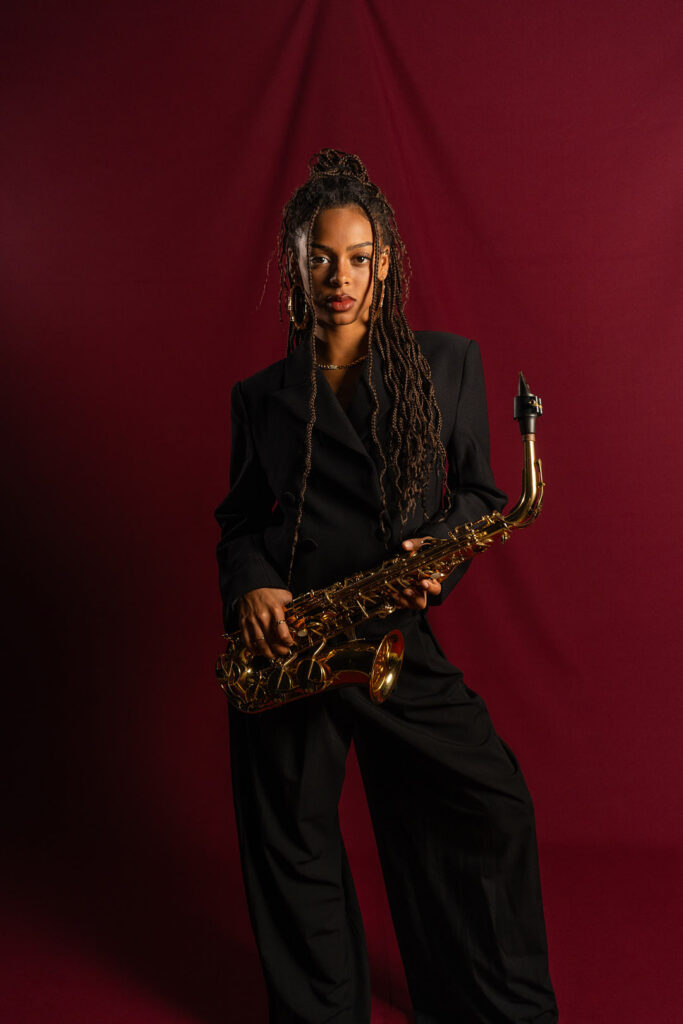
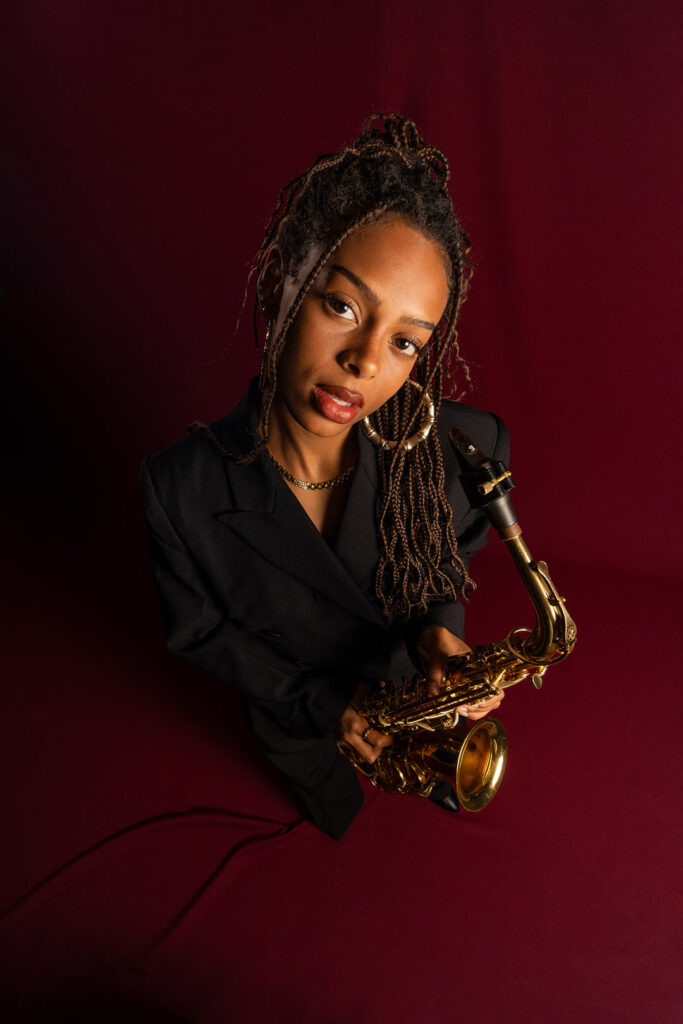

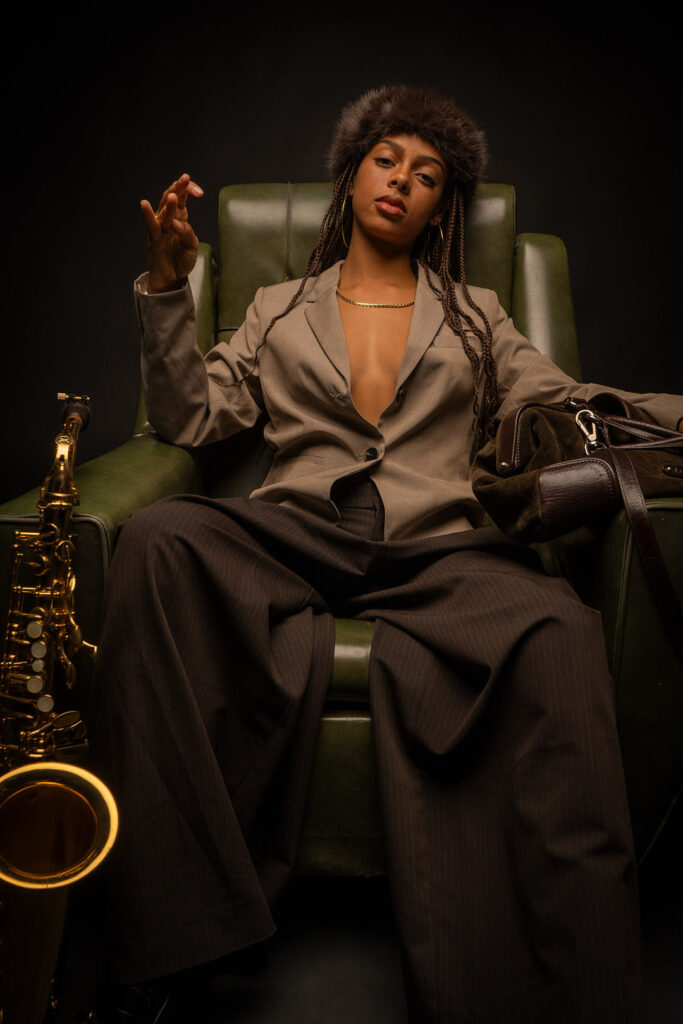
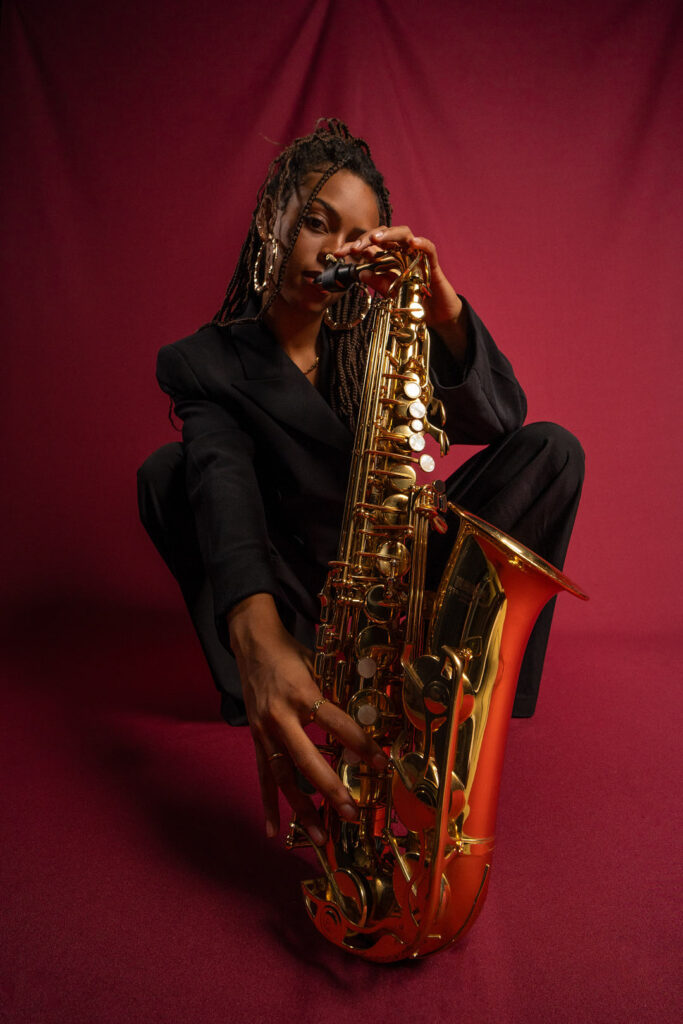
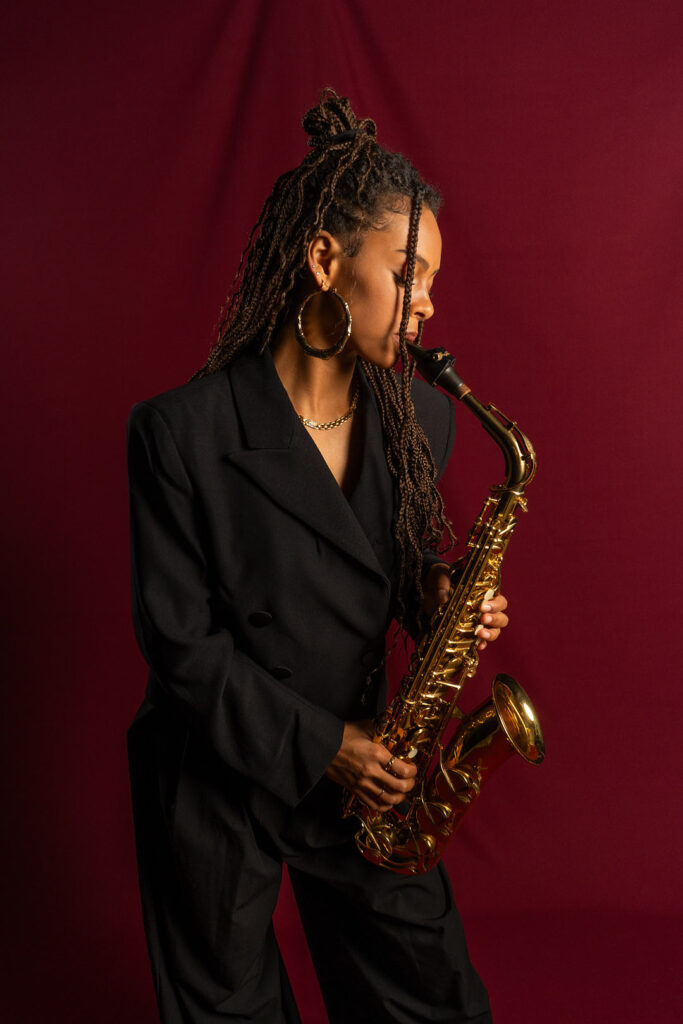
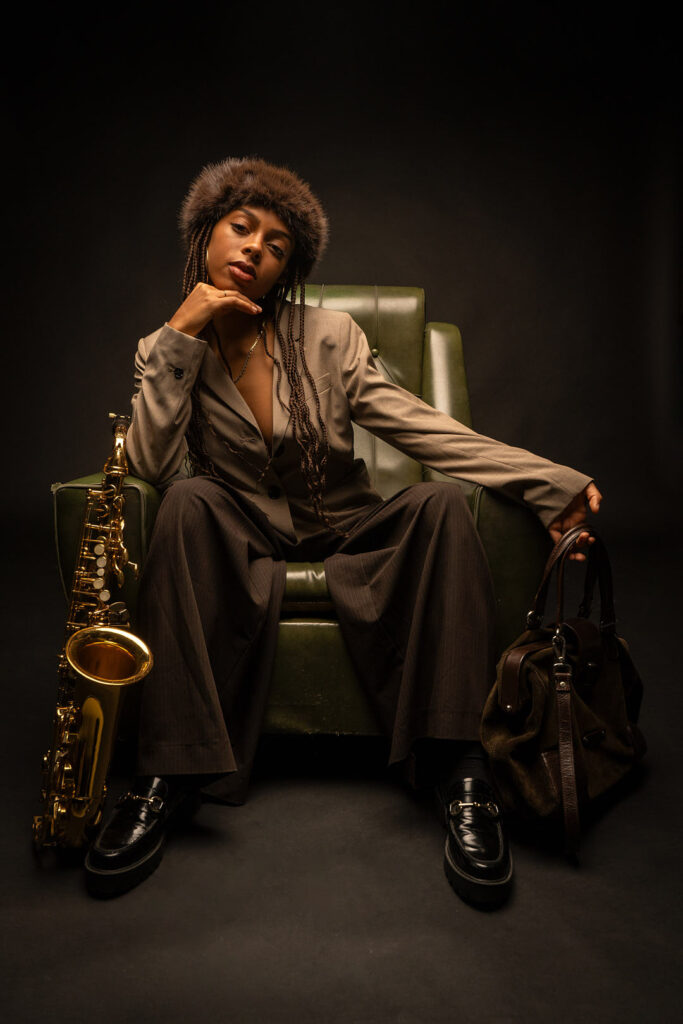
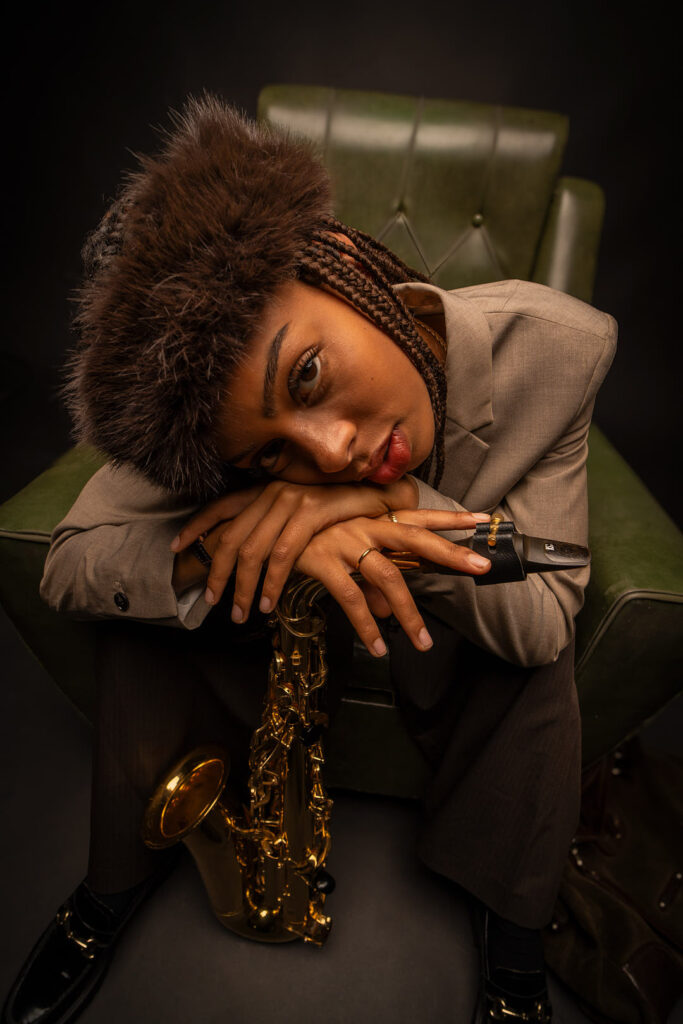
An Editorial to Rewrite History
With this reflection in mind, I decided to create this editorial as both a tribute and a reclamation of women’s roles in jazz, particularly in a position as powerful as that of the saxophonist. My aim was to depict the image of a woman who breaks with traditional gender conventions, standing out as a leader in a predominantly male band. I imagined her taking centre stage, capturing everyone’s attention with her talent and presence—something that, historically, women were not allowed to do.
To represent this idea, I was interested in playing with the duality between femininity and masculinity. I envisioned a woman with distinctly feminine features and energy, yet dressed in a more “masculine” style. Instead of adhering to the traditional narrative of fragility often associated with the feminine figure in jazz, this woman exudes strength, elegance, and authority, harmoniously blending both energies. This visual and conceptual contrast seemed to me a powerful way to reimagine and reclaim her place in jazz history.
Jazz, as a cultural and artistic movement, has at its core the ability to break barriers—both social and creative. Yet, the genre has not been exempt from reproducing the inequalities of its time. Today, in a context where we strive for a more inclusive and equitable society, it is time to reclaim the spaces that women were denied. This editorial is my small contribution to that cause: a tribute to the women who could not take centre stage in the past and a reminder that music, like art, belongs to everyone.
Written by @claudiamsegura
